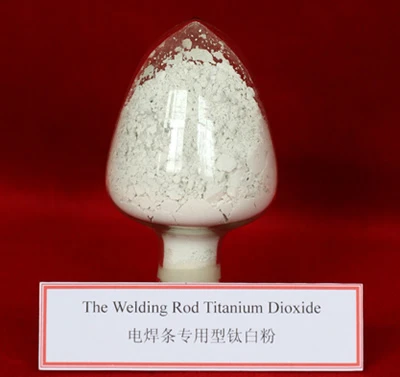
Дек . 11, 2024 10:42 Back to list
Safety Guidelines for Manufacturers Using Titanium Dioxide in Industrial Applications
Safety Measures and Best Practices for TiO2 Manufacturers
Titanium dioxide (TiO2) is a widely used chemical compound, known for its brightness and high refractive index. It plays a crucial role in various industries, including paints, coatings, plastics, and cosmetics. However, despite its numerous benefits, TiO2 presents certain safety challenges that manufacturers must address to ensure the health and safety of workers and the environment.
Understanding the Risks Associated with TiO2
TiO2 is generally considered safe for use in many applications, particularly when it comes to its function as a pigment. However, there are potential health risks when TiO2 is handled improperly. The most significant risks are related to inhalation and long-term exposure. In this context, TiO2 is classified as a possible human carcinogen by some regulatory agencies when it is in the form of fine particulate matter that can be inhaled. Therefore, manufacturers must adopt stringent safety measures to protect their employees and comply with regulatory requirements.
Key Safety Measures for TiO2 Manufacturers
1. Personal Protective Equipment (PPE) One of the fundamental requirements for ensuring safety in TiO2 manufacturing is the use of appropriate personal protective equipment. Workers should be equipped with respiratory protection, such as N95 masks or P100 respirators, to prevent inhalation of fine particulate TiO2. Additionally, gloves, goggles, and protective clothing should be provided to minimize skin and eye exposure.
2. Ventilation Systems Effective ventilation systems are crucial in manufacturing environments. Local exhaust ventilation (LEV) should be installed to capture airborne TiO2 particles at the source. This not only helps maintain air quality but also reduces the overall concentration of dust in the workplace, thereby lowering the risk of inhalation.
3. Regular Monitoring of Air Quality Regular monitoring of dust levels in the workplace is essential to ensure compliance with exposure limits. This should involve periodic air sampling and analysis to identify potential hazards. Based on these findings, manufacturers can implement appropriate control measures to mitigate risks.
tio2 safety manufacturers

4. Employee Training and Safety Protocols Educating employees about the hazards associated with TiO2 and providing training on proper handling procedures is vital. Safety protocols should be established, and employees should be encouraged to report any unsafe conditions or practices. Regular training sessions can reinforce safety standards and procedures.
5. Emergency Preparedness Manufacturers should develop and implement emergency response plans in the event of accidental exposure or spills. This includes having first aid kits readily available, clear evacuation routes, and proper access to emergency services. Regular drills can help ensure that all employees are familiar with emergency procedures.
6. Storage and Disposal Proper storage practices must be employed to prevent spills and leaks. TiO2 should be stored in sealed containers and kept in well-ventilated areas away from incompatible substances. In terms of disposal, manufacturers should comply with local regulations concerning hazardous waste and ensure that discarded materials are handled properly to prevent environmental contamination.
Regulatory Compliance
Manufacturers must remain informed about the regulations and guidelines set forth by agencies such as the Occupational Safety and Health Administration (OSHA) and the Environmental Protection Agency (EPA). Compliance with these regulations not only ensures worker safety but also reinforces the company’s commitment to environmental responsibility.
Conclusion
In conclusion, while titanium dioxide is a valuable and versatile material used in many industries, safety should always be a priority for manufacturers. By implementing comprehensive safety measures and protocols, providing adequate training, and ensuring regulatory compliance, manufacturers can mitigate the risks associated with TiO2. Ultimately, a proactive approach to safety will not only protect workers and the environment but also enhance operational efficiency and contribute to the overall success of the manufacturing process. The commitment to safety reflects a responsible manufacturing philosophy that prioritizes health and sustainability in an increasingly demanding market.
-
High Quality China Black Iron Oxide Powder Supplier Competitive Price & Fast Delivery
NewsJul.08,2025
-
High Quality Titanium Dioxide Used in Rubber – Trusted Supplier & Factory Price
NewsJul.08,2025
-
High Purity Barium Sulfate Particle Size - Wholesale Manufacturer from China
NewsJul.07,2025
-
Premium Titanium Dioxide Lomon R-996 Supplier – Quality & Wholesale Price from China
NewsJul.07,2025
-
Top Titanium Manufacturers in China - Quality Titanium Dioxide Supplier & Production Line Solutions
NewsJul.06,2025
-
OEM Titanium White Supplier & Factory – High Purity, Consistent Quality for Industrial Use
NewsJul.06,2025
